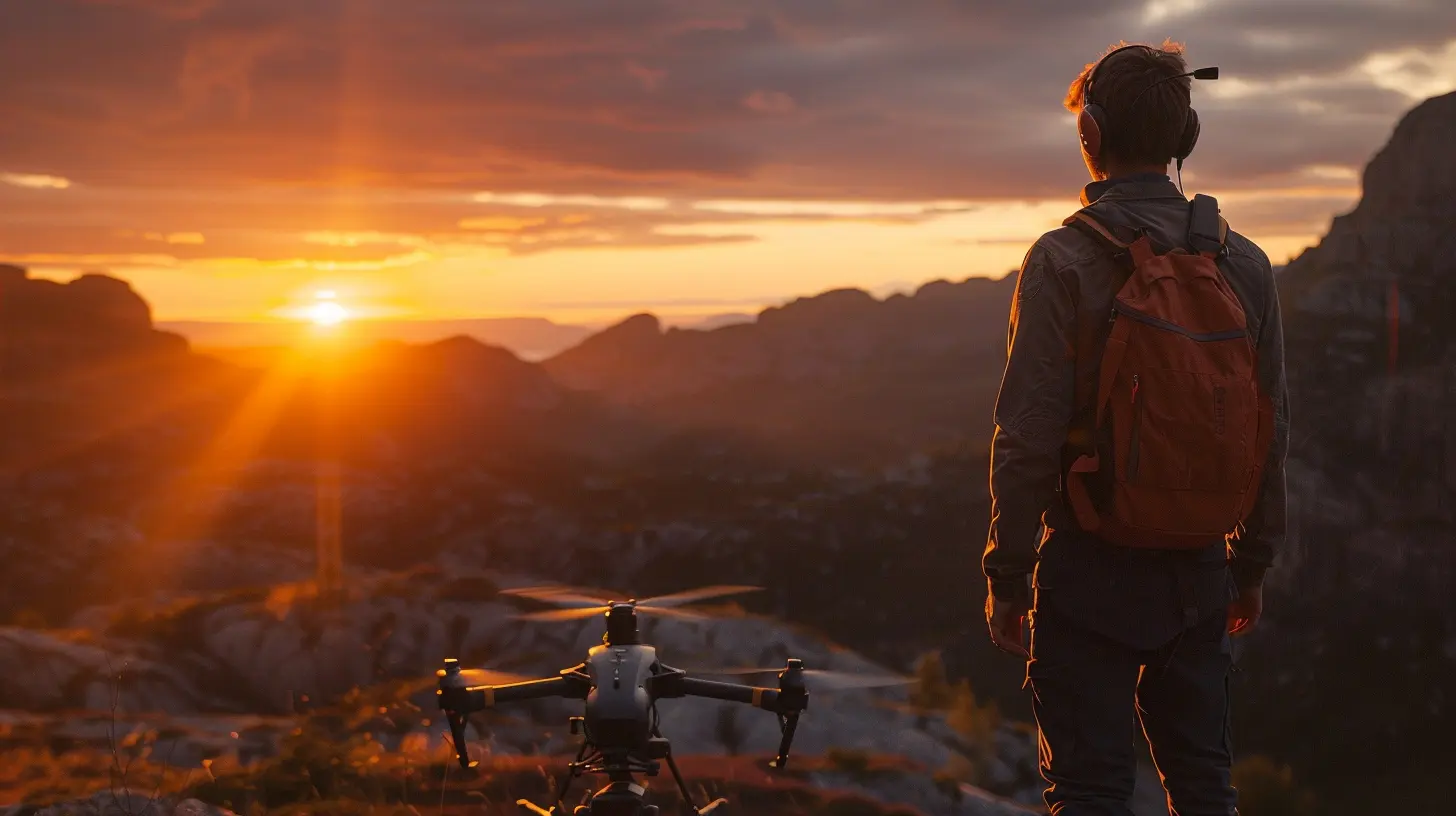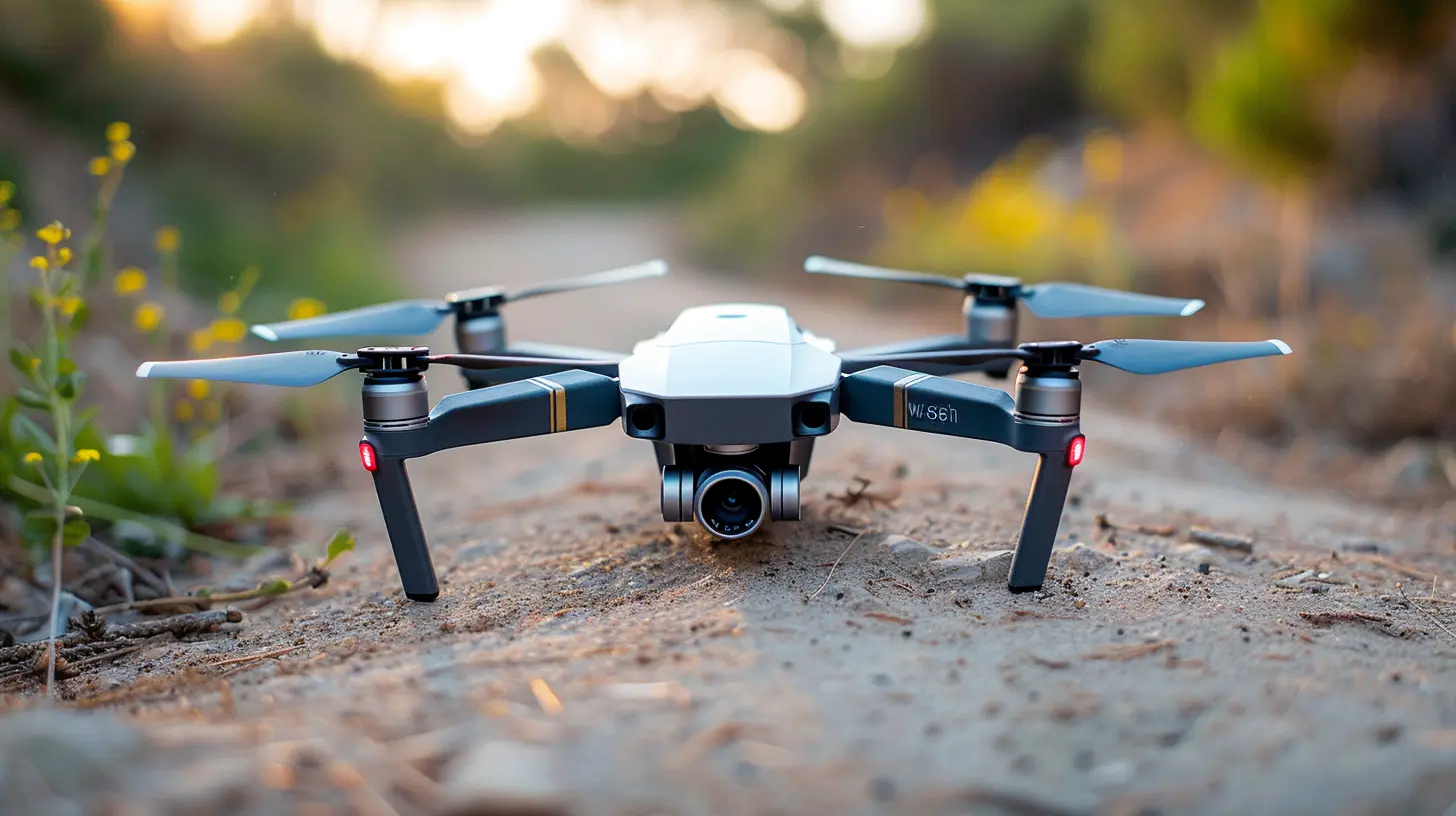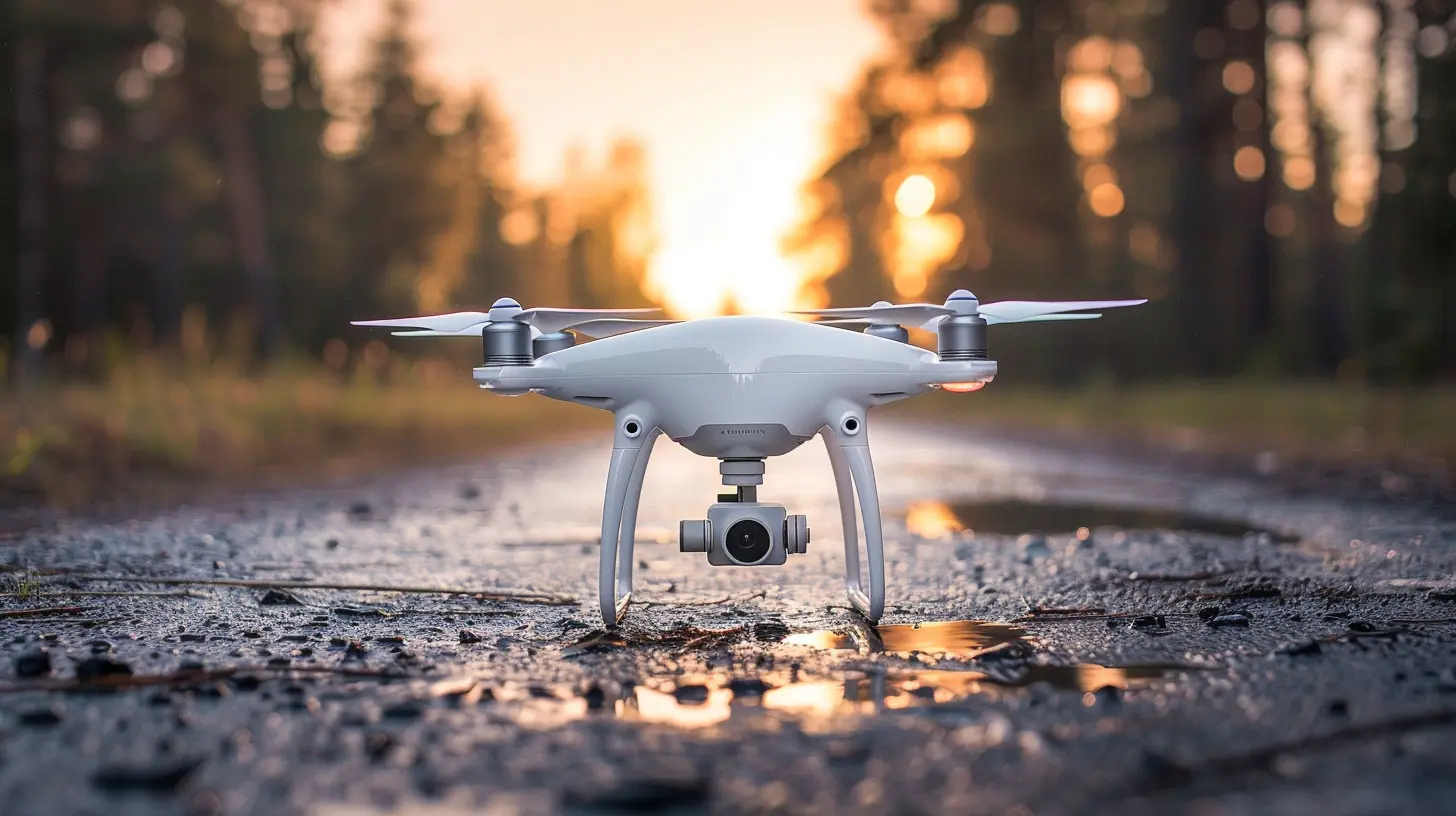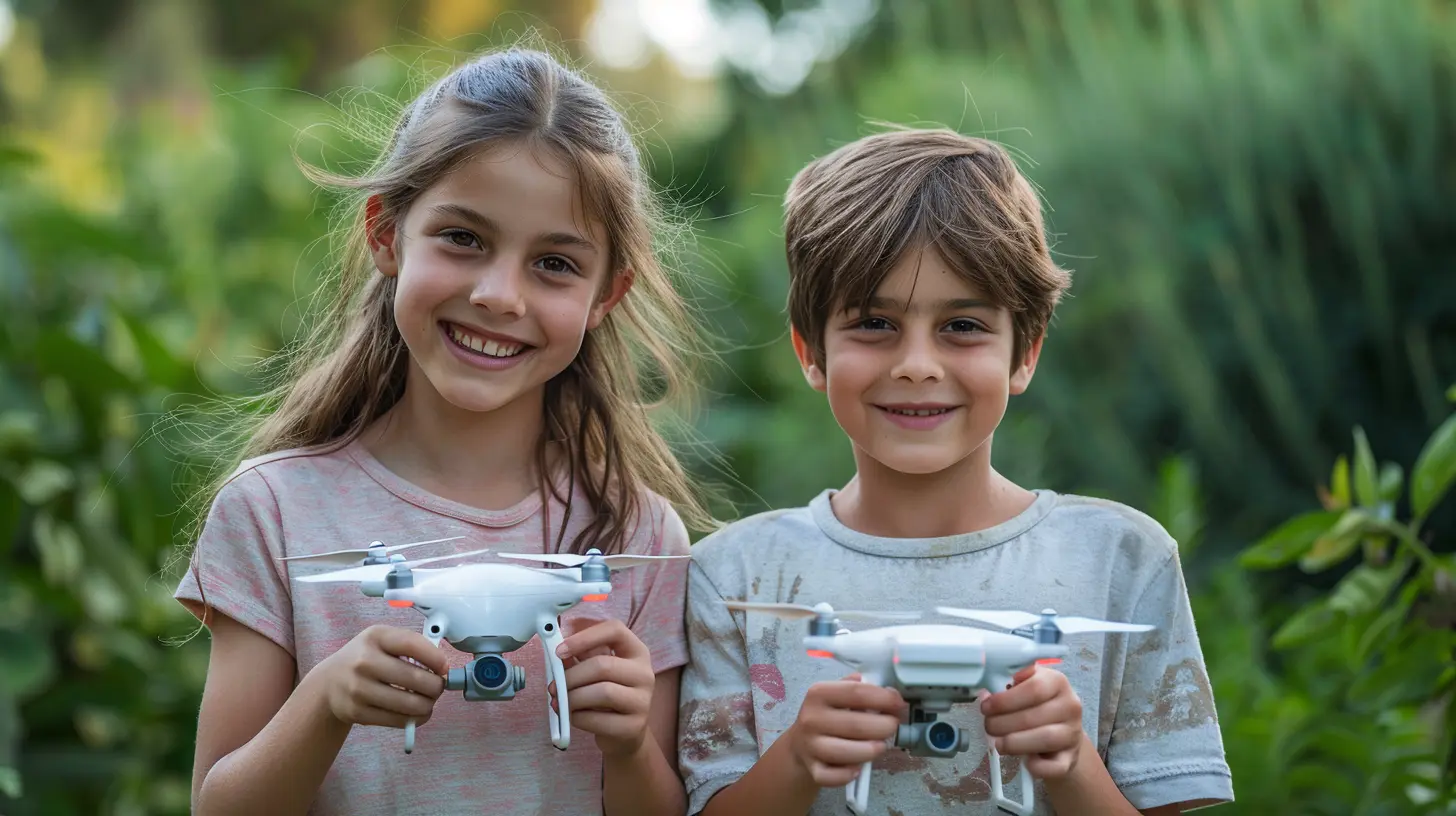Top Tips for First-Time Drone Pilots
18 November 2024
So, you've just unboxed your shiny new drone, and it's sitting there, ready to take flight. Exciting, right? But before you launch into the skies like a pro, there's quite a bit you need to know. Flying a drone can be an exhilarating experience, but it can also be a little overwhelming, especially if this is your first time. Don’t worry – I’ve got you covered! This guide will walk you through some of the top tips for first-time drone pilots to ensure you’re flying safe, smart, and having a blast in no time.

1. Know The Rules Before You Fly
Before you even think about taking off, you need to familiarize yourself with the rules and regulations in your country. Drone laws aren’t just there for fun – they’re in place to keep you, others, and the environment safe. In many places, you’ll need to register your drone if it weighs above a certain limit, and you’ll also need to follow specific airspace restrictions.For instance, it’s illegal to fly near airports, military bases, or over large crowds, and in some countries, you can’t fly your drone above a certain height. Flying without understanding these rules could result in fines, or worse, you could lose your drone.
Pro Tip:
Download an app like "B4UFLY" (for U.S. pilots) or similar apps in other countries. These apps can show you restricted flying zones and help you plan your flights legally.
2. Start Slow and Practice in Open Spaces
I get it – you're eager to zip through the skies like a falcon. But hold on a second! You’re a first-time drone pilot, so there’s no need to rush. Start slow. When you're just starting out, it's a good idea to practice flying in wide, open spaces like an empty park or field.Avoid areas with trees, buildings, or people – trust me, your drone will thank you for it. These obstacles can be tricky to maneuver around until you've mastered the controls. Open spaces give you the freedom to experiment, make mistakes, and learn without the anxiety of crashing into something.
Pro Tip:
Find a spot with soft ground, like grass, for an extra safety cushion in case of any bumpy landings. Hey, we’ve all been there!
3. Understand The Controls
If you're anything like me when I first started, the remote control might look like something straight out of a sci-fi movie. But don't panic – it’s actually simpler than it seems. Most drones have similar controls: two joysticks that control altitude, direction, and speed.Before your first flight, spend some time familiarizing yourself with these controls. You don’t want to be fumbling around mid-flight because you forgot which joystick does what. Learning to control the drone smoothly is key to avoiding crashes and enjoying your flight.
Pro Tip:
Many drones come with a "beginner mode," which limits speed and altitude. Use this feature until you’re more comfortable with the controls.
4. Check Weather Conditions – Always!
This one’s a biggie. Drones and bad weather don’t mix. Wind, rain, snow – these elements can throw your drone off course or even damage it. Strong winds, in particular, can cause stability issues and make it harder to land safely.Always check the weather forecast before flying. Even if it looks calm on the ground, conditions up in the air can be vastly different. If there's any doubt, it's better to postpone your flight. Trust me, you don’t want to risk turning your precious new gadget into a glorified paperweight.
Pro Tip:
Wind speeds above 10-15 mph can make flying difficult for many consumer drones. If the weather's not cooperating, save the flight for another day.5. Keep Your Drone in Line of Sight
It might be tempting to fly your drone as far and as high as possible to capture those epic shots, but as a first-time pilot, you should always keep your drone within your line of sight. This means you should be able to see your drone with your own eyes, without relying solely on the camera feed.Why? Because first-person view (FPV) might not give you the full picture of what’s around your drone. Obstacles, birds, or even other drones could come into play, and if you're too far away, you might not have enough time to react. Keeping your drone within sight gives you better control and reduces the risk of accidents.
Pro Tip:
In most countries, it's also a legal requirement to keep your drone within visual line of sight. So, play by the rules and stay safe.
6. Master Hovering First
Before you try any fancy tricks or fast maneuvers, learn to hover. Hovering perfectly in place is one of the most important skills a drone pilot can have. It might sound simple, but hovering requires a good understanding of your drone’s controls and balance.Why is this so essential? Because hovering lets you stabilize your drone in mid-air and gives you time to think. It’s especially helpful when you’re flying in more complex environments or trying to take that perfect aerial shot.
Pro Tip:
Practice hovering at different altitudes. Start low and gradually work your way higher as you get more comfortable.7. Don’t Fly Indoors (At Least Not Yet)
Flying your drone indoors might seem like a fun idea, but this can be a recipe for disaster, especially for beginners. Indoors, you have walls, ceilings, furniture, and other obstacles that can easily cause a crash. Drones need space to maneuver, and tight indoor areas don't provide that luxury.While some smaller drones are designed for indoor flight, it's better to get comfortable flying outdoors first. Once you've gained solid control, then you can think about bringing your drone inside for some fun.
Pro Tip:
If you must fly indoors, use propeller guards to protect your drone (and your furniture) from damage.
8. Watch Battery Life Like a Hawk
Drones usually have limited flight time, typically between 20-30 minutes, depending on the model. You'll want to keep a close eye on your battery life during each flight. Most drones will give you a warning when the battery is running low, but it's crucial to bring the drone back to you well before it runs out of juice.Flying until the battery dies could leave your drone stranded far away, or worse, cause it to crash. Make it a habit to land your drone when the battery hits around 20% to avoid any unpleasant surprises.
Pro Tip:
Carry spare batteries with you if you plan to fly for an extended period. That way, you can swap them out and keep the fun going.9. Learn How to Use GPS Mode
Most modern drones come equipped with GPS functionality, and for a first-time flyer, this is an absolute lifesaver. GPS mode helps your drone maintain its position in the air, making it easier to control. If you ever lose track of your drone or lose control, many drones have a "Return to Home" feature that uses GPS to bring the drone back to its takeoff point.However, don’t rely solely on the GPS. It’s a great support tool, but it’s still important to understand manual controls in case the GPS signal gets lost or weak.
Pro Tip:
Always calibrate your drone’s compass and GPS before each flight to ensure it functions correctly. It’s a quick step, but it can save you a lot of headaches.
10. Stay Calm in Case of Emergency
Even the most skilled drone pilots can face emergencies, whether it's a sudden gust of wind, a low battery, or an unexpected obstacle. The key is to stay calm and not panic. If your drone starts behaving erratically, don’t immediately try to yank it back with aggressive control inputs – this can make things worse.Instead, slowly reduce the throttle and bring the drone down to a safe altitude. If your drone has a “pause” or “hover” button, use it to stabilize the situation. Take a deep breath, assess what’s going on, and then make calm, calculated decisions.
Pro Tip:
Before your first flight, familiarize yourself with any emergency buttons or settings on your remote control. They could be a lifesaver when things go south.11. Review Your Footage and Learn
After each flight, take some time to review any footage you captured or analyze any issues you encountered. Did you notice the drone wobbling during certain maneuvers? Were your shots a bit shaky? Use this time as a learning experience.Improvement comes with practice, so don’t be discouraged if your first flights aren’t cinematic masterpieces. Every session is a chance to boost your skills and get more comfortable with your drone.
Pro Tip:
Take notes after your flights. Jot down what went well and what could be improved. It’s a great way to track your progress.
Final Thoughts
Flying a drone for the first time is an exhilarating experience, but it’s also one that requires preparation and practice. By taking these tips on board, you’ll not only fly with confidence but also ensure the safety of your drone and those around you. Remember, the skies are vast, and the possibilities are endless, but it all starts with mastering the basics. So, take it slow, enjoy the learning process, and soon enough, you’ll be soaring like a pro!all images in this post were generated using AI tools
Category:
DronesAuthor:

Adeline Taylor
Discussion
rate this article
18 comments
Loretta McCollum
Embrace patience and practice, as mastery comes with time. Always prioritize safety and regulations, and remember to enjoy the learning process; every flight is an opportunity for growth and exploration.
March 13, 2025 at 8:26 PM

Adeline Taylor
Thank you for your insightful comment! Patience and safety are indeed crucial for every aspiring drone pilot. Enjoy the journey!
Bennett Barron
Flying a drone for the first time? Remember, it’s not just about mastering the skies—avoid the trees, dodge the pigeons, and for Pete's sake, don’t accidentally photobomb your neighbor’s barbecue! Aim for clouds, not chaos. Happy soaring, future aerial acrobats! 🛸✨
February 21, 2025 at 8:12 PM

Adeline Taylor
Thanks for the fun reminder! Happy flying, and may your skies be clear and chaos-free! ✈️
Maris Long
Congrats on your new drone! Just remember, if you think flying it is easy, you probably also believe your cat is faithfully plotting against you. Embrace the learning curve, avoid trees, and for the love of tech, don’t be ‘that’ pilot—stay classy in the skies!
February 8, 2025 at 8:15 PM

Adeline Taylor
Thanks for the advice! I’ll definitely keep that in mind while navigating the skies!
Judith Hubbard
Flying a drone feels a bit like walking a cat on a leash—totally cool until it decides to do its own thing! Buckle up and enjoy the ride!
January 29, 2025 at 12:41 PM

Adeline Taylor
Absolutely! Just like with cats, patience and practice are key. Enjoy the adventure!
Alyssa Ramos
Mastering flight unveils new perspectives; embrace the journey.
January 22, 2025 at 2:01 PM

Adeline Taylor
Thank you! Embracing the journey is key to becoming a skilled drone pilot—each flight brings new insights and experiences. Happy flying!
Deborah Larsen
Great article! As a first-time drone pilot, I found the tips incredibly helpful, especially the emphasis on safety and regulations. Understanding battery management and practicing in open spaces are crucial. Looking forward to more guidance as I embark on this exciting journey!
January 12, 2025 at 8:06 PM

Adeline Taylor
Thank you for your feedback! I'm glad you found the tips helpful. Wishing you a safe and enjoyable drone flying experience!
Thor McCracken
Great article! Your tips for first-time drone pilots are incredibly helpful and encouraging. It's fantastic to see such practical advice for beginners looking to explore the skies. I’m excited to take to the air and learn more—thanks for sharing your expertise! Keep up the great work!
January 3, 2025 at 4:07 AM

Adeline Taylor
Thank you so much for your kind words! I'm thrilled to hear that you found the tips helpful. Enjoy your flying journey!
Sera Barlow
Great tips! As a newbie, I appreciate the guidance. Can't wait to apply these and start my drone journey!
December 26, 2024 at 7:38 PM

Adeline Taylor
Thank you! I'm glad you found the tips helpful. Enjoy your drone journey!
Nathan Rocha
Great insights for beginners! I'm fascinated by the potential of drones, not just for photography but also for environmental monitoring and delivery services. I wonder how these tips could evolve as technology advances. Looking forward to trying some of these suggestions!
December 24, 2024 at 4:21 AM

Adeline Taylor
Thank you! I'm glad you found the insights helpful. As technology advances, we can expect even more exciting applications for drones, and I can't wait to see how they evolve! Happy flying!
Nyx Burton
Flying a drone for the first time is an exciting adventure! Embrace the learning journey, stay curious, and remember that every expert was once a beginner. With practice and patience, you’ll discover a whole new perspective from the sky! Enjoy the flight!
December 22, 2024 at 5:34 AM

Adeline Taylor
Thank you! Embracing the journey is key, and I'm excited to share these tips to help new pilots soar!
Whitney Wells
Great tips for beginners! Excited to start my drone journey—your insights are invaluable. Thank you!
December 14, 2024 at 1:52 PM

Adeline Taylor
Thank you! I'm thrilled to hear you found the tips helpful. Enjoy your drone journey!
Zephyrwind Kline
Great tips! Starting with the basics is essential for safe and enjoyable drone flying experiences.
December 12, 2024 at 9:32 PM

Adeline Taylor
Thank you! I'm glad you found the tips helpful. Starting with the basics truly sets the foundation for a great flying experience!
Carter Flores
This article offers invaluable insights for new drone pilots. I appreciate the emphasis on safety and pre-flight checks, as they are crucial for building confidence and ensuring a positive flying experience. Great read!
December 5, 2024 at 1:33 PM

Adeline Taylor
Thank you for your feedback! I’m glad you found the tips on safety and pre-flight checks helpful for building confidence. Happy flying!
Rory Barnes
Excited to start my drone journey—thanks for the tips!
November 27, 2024 at 7:31 PM

Adeline Taylor
You're welcome! Enjoy your drone journey!
Capri Carter
As a first-time drone pilot, I found this article super helpful! The tips are practical and easy to follow. Can't wait to take to the skies and capture some amazing views—thanks for sharing your expertise! 🚁✨
November 25, 2024 at 1:37 PM

Adeline Taylor
Thank you for your kind words! I'm thrilled you found the tips helpful. Enjoy your flying and capturing those amazing views! 🚁✨
Aurelia Flores
Great insights! I appreciate the practical tips for beginners; they make the learning curve much more manageable.
November 24, 2024 at 1:33 PM

Adeline Taylor
Thank you! I'm glad you found the tips helpful. Happy flying!
Ranger Hayes
As you embark on your journey into the skies, remember: every drone holds secrets beyond the clouds. Mastering the controls is just the beginning. With each flight, uncover hidden landscapes and whispers of the wind. The sky may be vast, but it's filled with mysteries waiting to be explored.
November 20, 2024 at 8:40 PM

Adeline Taylor
Thank you for the inspiring words! Embracing the adventure and curiosity is essential for every new pilot. Happy flying!
Pilar Nguyen
First-time drone pilots, remember: flying high doesn’t mean your skills should! Buckle up, it's a wild ride—don’t crash and burn!
November 19, 2024 at 8:24 PM

Adeline Taylor
Great reminder! Safety and skill go hand in hand—take it slow and enjoy the journey!
MORE POSTS

Audio Content Creation Tools That Will Transform Your Sound

The Shift to DevSecOps: Integrating Security into the DevOps Pipeline

How AI in Healthcare Gadgets is Saving Lives

Exploring the Latest Design Trends in Wireless Earbuds

Gaming Laptops for VR: What You Need to Know

The Evolution of Electric Vehicles: Beyond Batteries

Tools That Help You Create a Seamless Content Calendar

Building Ethical Machine Learning Models: Challenges and Best Practices

How Quantum Computing Will Revolutionize Scientific Research

Gaming Laptop vs. Desktop: Which is the Better Choice?

How to Stay Inspired Using Creative Tools for Content Creation